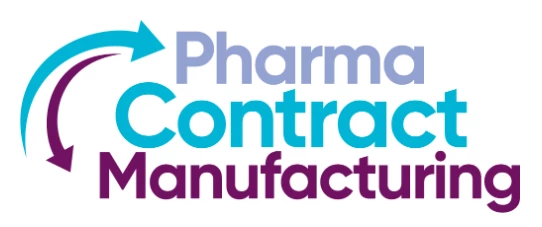Budgets for the biomanufacturing sector of biotech show a significant upswing from recent years’ freezes and cuts. In fact, respondents to BioPlan’s 8th Annual Report and Survey of Biopharmaceutical Manufacturing Capacity and Production [1] projected only increases in 2011. This budget bump reverses the previous 2 years’ slashes. While a single year does not define ongoing trends, responses register a positive change from recession-reduced allocations in all areas. (Fig. 1)
Fig 1: Selected Data: Average Change in Biomanufacturers’ Budgets 2009-2011
Source: (Selected Data) 8th Annual Report and Survey of Biopharmaceutical Manufacturing, April 2011, 490 Pages, BioPlan Associates, Inc. www.bioplanassociates.com
Overall, spending in virtually all budget areas is up in 2011 between 1-6%. In BioPlan Associates Inc’s 8th annual survey, responses from 352 global, biomanufacturers/CMOs in 31 countries, and 186 vendors to the industry show that productivity-related internal investments rate the top spending portions. The study covers new product needs, budget changes, capacity constraints, disposables, downstream purification, quality management, hiring issues, and others. Top spending is occurring in:
- new technology
- personnel development
-
process development and optimization.
This year’s leader, “New technologies to improve efficiencies/costs for downstream production” reaps a 6.4% average spending increase. Funding activities to improve capacity and break the downstream bottlenecks, their 2011 increase follows downstream’s 2010 4% increase. Integrating “New technologies to improve efficiencies/costs for upstream” is a close second with a 6.2% increase (Fig. 1). Both downstream and upstream come close to tripling their 2.4/2.5% numbers of 2009.
Budget for new capital equipment took one of the biggest jumps, growing from a -0.6% in 2009, to +6% this year. This is likely the result of latent demand, or of replacement of equipment wearing out that should have been replaced earlier. In line with this, a significant shift is the focus on reducing capital investment in facility and equipment. Despite the loosening of budgetary constraints, end-users are increasingly interested in seeing how disposable systems can help them avoid capital investments in manufacturing. When considered over a 5-year period, even through the current economic situation, budgets for these devices have increased between 5% and 8% over this time frame.
This year, we are finding that companies are continuing to build their organizations, but are doing so more strategically. In fact, “Operations Staff Training to improve efficiency” ranked 4th this year, suggesting that funding for on-going process improvements is likely to continue.
The focus on “productivity” directly ties to decisions in and spending focus on staffing. After dismal waves of layoffs, budgets for hiring in production areas are up significantly this year. In fact, our survey shows that the budget cutting has reversed from just three years ago, w en the global industry was showing a 2.3% cut in budgets for hiring of production staff. Now, we’re seeing a dramatic upswing and budgets for hiring are up 3.5%. This represents one of the biggest turnaround swings among the 12 budget areas we measured this year.
Similarly, the survey shows respondents attributing“Better process development” and “Overall better control of process” as the number 1 and number 3 factors, respectively, in creating“’Significant’ or ‘Some’ Improvement in Biomanufacturing Performance”.
Buoyed Budgets’ Funding Flows from Cost Cuts
Although companies are expanding budgets, they are proceeding cautiously and critically evaluating expenditures. The ability to increase budgets flows in part from past years’ scrutiny of all fiscal aspects yielding some resultant savings. BioPlan Associates, Inc. evaluated how companies are addressing cost issues in biopharmaceutical manufacturing. We found the most significant action taken in the past 12 months was the implementation of programs to reduce operating costs (73.1%), followed by “negotiating harder with vendors” (55.7%).
In the cost-cutting drive, three other initiatives produced good outcomes:
- implementation of programs to reduce capital costs,
- implementation of operational excellence programs and
- reducing process development times and costs.
Summary
Across all departments, budget trends are a leading indicator of how constraints have loosened, especially for expenditures that improve process performance. BioPlan Associates, Inc.’s annual survey documents and analyzes how the rebounding and maturing biopharmaceutical industry is moving forward despite recent global economic challenges.
[1] Langer, E., 8th Annual Report and Survey of Biopharmaceutical Manufacturing Capacity and Production: BioPlan Associates, April 2011, 490 pages, www.bioplanassociates.com
Survey Methodology: This eighth in the series of annual evaluations by BioPlanAssociates, Inc. yields a composite view and trend analysis from 352 responsible individuals at biopharmaceutical manufacturers and contract manufacturing organizations (CMOs) from 31 countries. The methodology also encompassed an additional 186 direct suppliers (vendors) of materials, services and equipment to this industry. This year's survey covers such issues as: current capacity, future capacity constraints, expansions, use of disposables, trends and budgets in disposables, trends in downstream purification, quality management and control, hiring issues, employment and training. The quantitative trend analysis provides details and comparisons by both biotherapeutic developers and CMOs. It also evaluates trends over time, and assesses differences in the world's major markets in the U.S. and Europe.





















